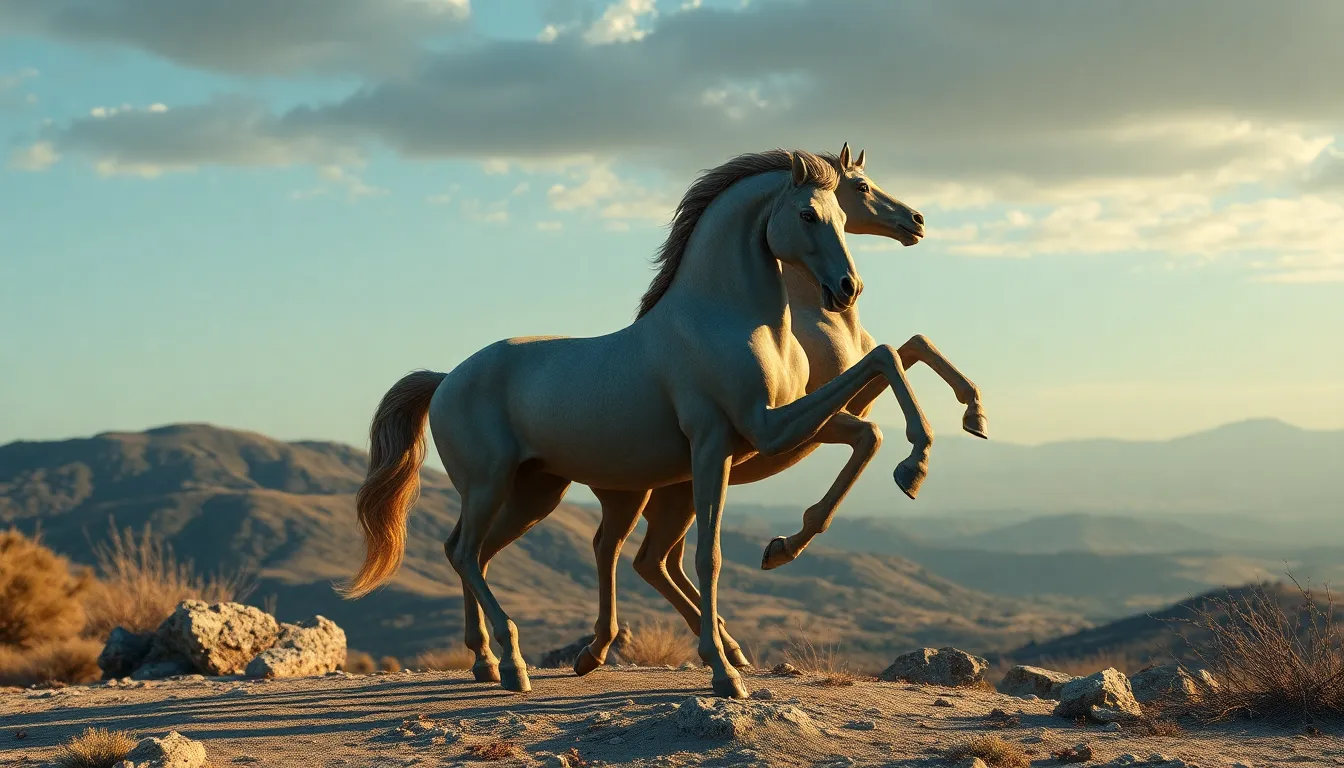The Legacy of Centaurs in Contemporary Art and Literature
I. Introduction
Centaurs, the mythical creatures with the upper body of a human and the lower body of a horse, have captivated the imaginations of people for centuries. Originating from ancient Greek mythology, these beings embody a unique duality, representing the continuous struggle between civilization and wildness. Their symbolic significance extends beyond mere mythology, often reflecting deeper themes of identity, conflict, and harmony.
This article aims to explore the legacy of centaurs in contemporary contexts, examining their evolution in art and literature, and how they continue to resonate in modern culture.
II. Centaurs in Classical Mythology
The historical roots of centaurs trace back to ancient Greek mythology, where they were often depicted as wild and unruly beings. The most famous stories include their encounters with heroes and gods, particularly in the context of their conflict with humans.
The dual nature of centaurs—part human, part beast—serves as a powerful symbol of the internal conflicts faced by individuals. Key myths, such as the battle between the Lapiths and the centaurs at the wedding of Pirithous and Hippodamia, illustrate the implications of character and identity. In these narratives, centaurs often represent the chaotic and untamed aspects of existence, contrasting sharply with the order and rationality associated with humans.
III. The Evolution of Centaur Representation
As centuries progressed, the representation of centaurs evolved significantly. During the medieval period, centaurs were often viewed through the lens of allegory, representing the struggle between man’s rationality and animalistic instincts.
The Renaissance marked a resurgence of interest in classical mythology, leading to a revival of centaur imagery. Artists began to depict them with more complexity, reflecting a deeper understanding of their symbolic nature.
- Transition from chaotic beings to more nuanced representations
- Integration of human emotions and intellect in artistic depictions
- Shifts in symbolism, reflecting societal values and beliefs
IV. Centaurs in Contemporary Literature
In modern literature, centaurs continue to serve as rich sources for character development and thematic exploration. Their unique duality allows authors to delve into complex issues surrounding identity and self-perception.
Contemporary novels and poetry often reflect the struggle between the civilized and wild aspects of human nature. Notable examples include:
- The Last Unicorn by Peter S. Beagle: Featuring a centaur that embodies themes of loss and transformation.
- The Chronicles of Narnia by C.S. Lewis: Portraying centaurs as wise and noble beings, contrasting with their more chaotic ancient counterparts.
These literary works invite readers to reflect on their own identities and the inherent dualities within themselves.
V. Centaurs in Contemporary Art
Visual art has also embraced centaurs, with artists drawing inspiration from their rich mythological background. Contemporary depictions often highlight the tension between civilization and nature, exploring themes of identity and transformation.
Some notable artists who have interpreted centaurs in their work include:
- Franz Marc: His expressionist paintings capture the dynamic energy of centaurs, blending human and animal forms.
- Sandro Botticelli: In works like The Birth of Venus, centaurs symbolize the connection between the human experience and the natural world.
The influence of mythology continues to inspire modern artistic expressions, showcasing the enduring legacy of centaurs in contemporary art.
VI. Psychological and Sociocultural Interpretations
The centaur serves as a multifaceted symbol of the human psyche, often representing the inner conflict between our primal instincts and societal expectations. This duality is reflected in various psychological theories, particularly in discussions surrounding the nature of identity.
Key themes explored in contemporary interpretations include:
- Conflict between reason and emotion
- Harmony found in the acceptance of one’s dual nature
- Connections to nature and the wild as essential aspects of the human experience
Centaur representations in discussions of identity and belonging highlight the complexities of the human experience, making them relevant in today’s sociocultural discourse.
VII. The Role of Centaurs in Popular Culture
Centaurs have made significant appearances in popular culture, particularly in films, television, and video games. Their allure in fantasy and science fiction genres stems from their unique blend of human intelligence and animal strength.
Some notable representations include:
- Harry Potter series: Featuring the centaur Firenze, who embodies wisdom and a connection to the natural world.
- The Chronicles of Narnia film adaptations: Bringing centaur characters to life, showcasing their nobility and strength.
- Video games like The Legend of Zelda series: Featuring centaur-like characters that embody agility and courage.
The cultural significance of centaurs is evident in the dedicated fan communities that celebrate these mythological beings, further solidifying their place in contemporary culture.
VIII. Conclusion
The legacy of centaurs in contemporary art and literature is a testament to their enduring appeal. From their origins in classical mythology to their modern interpretations, centaurs continue to inspire and provoke thought regarding identity, conflict, and the human experience.
As we navigate the complexities of modern life, the ongoing relevance of centaurs in discourse reflects our intrinsic struggle with the duality of our nature. The future of centaur representations promises further exploration of these themes, ensuring that these mythical beings will remain significant in both art and literature.




